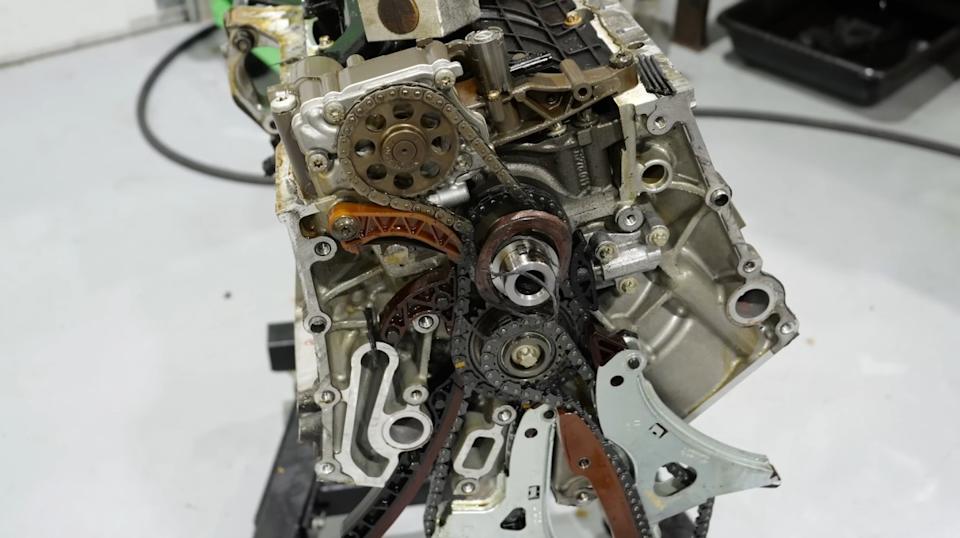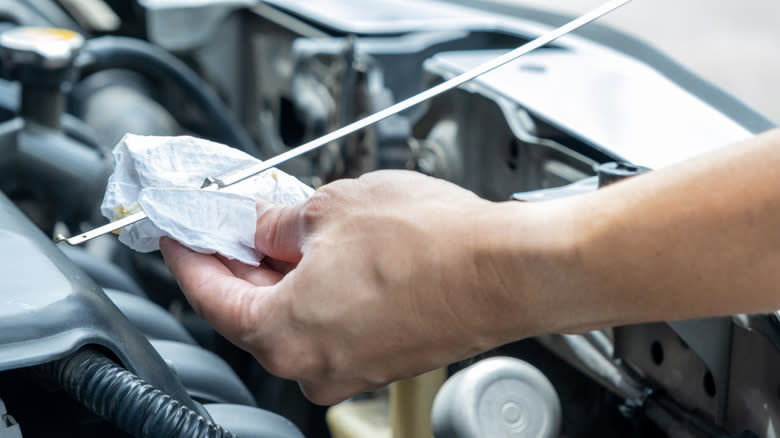Engine Teardown Reveals A Simple Error That Destroys The Reliable M257 Engine originally appeared on Autoblog.
One Of Mercedes' Most Prolific Engines
No engine is perfect, but some are so well engineered that they're close enough, and the Mercedes M276 DE 35, a 3.5-liter naturally aspirated V6, is one of them. The engine has its minor common faults, like oil leaks and problematic camshaft adjusters/cam followers, but it was so good that, with the exception of front-wheel-drive-based vehicles like the A-Class and B-Class, Mercedes put it in everything it could between 2010-2017 - ML 350, C 350, E 350, S 350, GLE 350 (ML 350 replacement), and GLK 350. However, as YouTube channel I Do Cars shows in a teardown of a core exchange M276 (embedded at the bottom of this article), ignoring the small issues can lead to massive ones. With no VIN plate, mileage history, or other information, the only way to determine what killed this typically reliable engine is one step at a time.
Deceiving Deconstruction

View the 2 images of this gallery on the original article
Before anything is done, we can see a hole in the oil pan, and combined with the fact that the crankshaft refuses to turn over, this is worrying. However, with no evidence of a connecting rod escaping the black, and since this is a non-running core exchange engine, it's clear that the oil pan has simply been swapped from another broken motor. A good sign for the parts reseller is that no part of the electrical harness appears to have been torn, so whoever removed the engine (from a 2014 or 2015 ML 350) did it carefully. Moving on, this direct injection motor shows plenty of evidence of carbon buildup and some minor oil seepage in the head, but the valvetrain seems nearly perfect. At least, it did until the valve cover was pulled, showing a worn cam follower with scoring on the camshaft, too. Cam lobes also show some evidence of wear, but not enough to affect the journal bearings. Without complete timing failure, these factors are not to blame for this particular motor's failure. That becomes apparent under the timing cover, once the head is removed.
The Cause Of The M257's Failure And How To Avoid It

After removing the water pump, oil pump, and tensioners, and loosening the end caps, the crankshaft finally turns, allowing the removal of the main bearings (one of which was badly scored, though journal bearings were okay). The block looks good, with only some minor scoring on the cylinder walls, and there's no shrapnel in the oil filter or even the residual lubricant in the head. Thus, the diagnosis is this: an unaddressed minor oil leak spilled onto the serpentine belt. Over time, the belt became saturated and lost its tension, allowing it to move slightly backward and forward. Unfortunately for the original owner of this engine, this time, the belt moved toward the back of the engine, being sucked behind the crank pulley (N54 owners can relate). A loose belt is already bad for timing, but bits of the devoured belt then knocked the oil pump chain off its gear and onto the crank, where it got compressed.
This, along with pieces of the crank seal and serpentine belt being in a tight space where they don't belong, led to an overextension of one of the oil pump tensioners, causing the oil pump to seize. The moment that happened, the engine died, and as the car coasted to the side of the road, the crank had already made its last rotation under power. This explains the lack of metal debris in the oil filter and other areas; the oil pump had no time to circulate any more oil once the first main bearing was scored.
So what can you do? First, don't ignore oil leaks, even if minor. Even if they don't lead to this specific issue, this engine is notorious for dripping oil onto harness connectors, and if some of it gets into the ECU plug, that ECU is toast. Second, ensure that oil services and top-ups are performed with a funnel to avoid unnecessary drips on finicky components. And finally, don't just replace fluids and filters - tensioners have a limited lifespan, too. The M257 is one of the most reliable modern Mercedes engines ever, but it needs care and maintenance nonetheless.
Engine Teardown Reveals A Simple Error That Destroys The Reliable M257 Engine first appeared on Autoblog on Aug 9, 2025
This story was originally reported by Autoblog on Aug 9, 2025, where it first appeared.








Comments